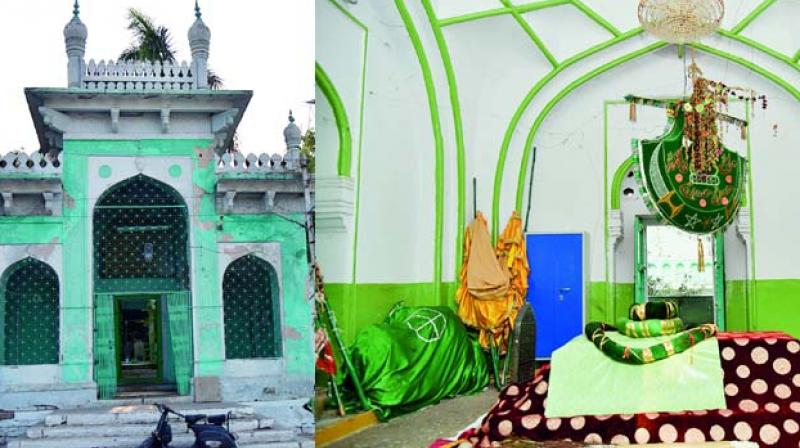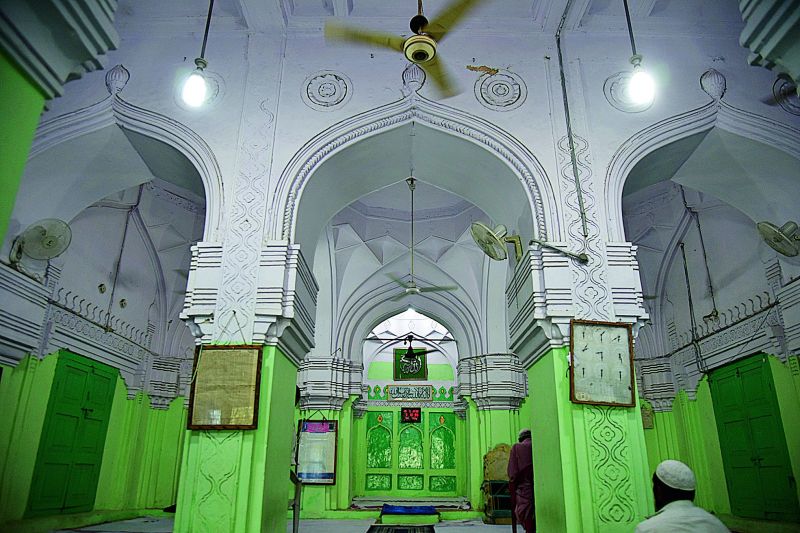Hyderabad: Mian Mishk Masjid left to decay by caretakers
The masjid stands in one corner of a huge quadrangle which is dirty and smelly with leaking water.

Hyderabad: The Mian Mishk Masjid stands on a corner at the beginning of the Purana Pul and the end of Jumerat Bazaar. So, crowds and the noise of traffic are permanent. Probably not in 1678 when it was built, but now it is difficult to cross the road or for that matter enter the masjid. Earlier, this was the route from Golconda to Karvan to Charminar and Machilipatnam.
The masjid stands in one corner of a huge quadrangle which is dirty and smelly with leaking water. The mutawalli or caretaker of the masjid, Samad Warsi, who is a Member of the Legislative Council, is quick to defend the not-so-neat surroundings, saying that workers had gone to get their passbooks and collect money from the government and hence the disarray. The masjid was built by Mian Mishk, a noble in the court of Abdulla Qutb Shah. It is decorated with minarets with an inscription on top of the main gate.

There used to be hot water baths here, more like a hamam for the men. “The hamam was a big room where massages and baths were given at the back of the masjid. Now it is totally dilapidated,” said the mutawalli.
There is a wazukhana in the middle with a fountain which tinkles delicately. A huge covered verandah has been built with a staircase on the left of the water body.
Prior to that, the dominant part of the masjid would have been the two huge pillars which look like they are holding up the entire building. Glass doors with thin grills surround the front of the masjid. The furnishings are simple - just a few carpets and lights.
On the right of the main masjid is the tomb of Mian Mishk, which is well kept. An inscription on Mian Mishk’s tomb mentions that he was secretary to the king, holding charge of the royal key and of the Carnatic troops. There is a suggestion that he might have been of African origin.
Stone pillars, brackets, and sajjas typical of the time and region abound. On the left of the main tomb are many minor tombs surrounded by the serai which is now in a dilapidated condition.
Each of the inscription tablets fixed on the entrances have farmans (edicts). A copy of the firman of Sultan Abul Hasan Qutb Shah reads:
“Trusted servant of the Imperial Court, Malik Mishk, the Commander of the Carnatic troops, has been granted the honour of laying this request before those standing in the resplendent court that the income of the bazaar attached to the mosque of Malik Mishk, besides the annual grant of 80 huns (gold coin of the Deccan about 50 grams in weight, often called pagoda), as detailed in the firman...shops and stalls on both sides of the bazaar of the masjid...be graciously awarded and endowed for the expenses to be incurred in connection with the feeding of the poor, the religious ceremonies of the first ten days of Muharram and the maintenance of alawa (where incense is burnt and rites performed) and abdar khana (water closet where cold drinks are distributed to the thirsty). And the lights and carpets of the above mosque as also for similar expenses.”
On the eastern gateway there is another inscription which records the erection of a building in 1035 AH (1625 AD) during the reign of Muhammad Qutb Shah. The masjid is among the 137 heritage list of Hyderabad Urban Development Authority, and now there is a board which says that it is under the Archaeological Survey of India.
